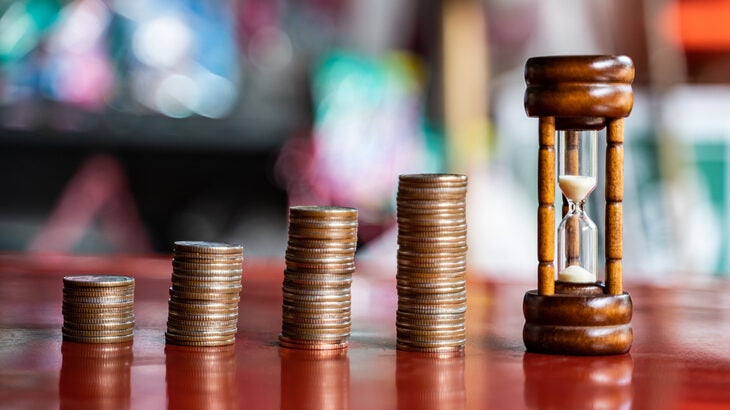
Savings account rates have held firm over the past week, though savers can earn much higher yields now compared to this time last year. This is a positive development, to be sure, but make sure you consider fees, customer service and user-friendly digital experience when selecting a savings account.
Savings accounts provided subatomic yields following the Great Recession thanks to the Fed keeping borrowing costs low in order to cajole economic growth.
This low-rate environment was abandoned, however, following the government’s extensive spending during the pandemic, which caused the Fed to significantly boost interest rates to offset soaring inflation. That then prompted banks and credit unions to raise rates for savers.
Savings account rates — $2,500 minimum deposit
The highest interest rate on a standard savings account today is 5.84%, per Curinos, the same as a week ago. Meanwhile, the average APY (annual percentage yield) for a traditional savings account, as reported by Curinos, is 0.23%, the same as last week.
APY represents the return your account will generate in a year, taking into account compound interest—the interest earned on both the principal and previously accumulated interest in your account.
For instance, if you were to invest $2,500 at a 5.84% rate (the current high) for one year, you would earn roughly $150 in interest, assuming daily compounding and no additional contributions.
Savings account rates — $10,000 minimum deposit
The average APY for savings accounts requiring a minimum deposit of $10,000 is 0.23%, unmoved over the past week. However, numerous financial institutions offer substantially higher rates.
Some of the top high-yield savings accounts, for instance, currently feature rates of 4.00% or higher.
Per Curinos, the highest interest rate today on a savings account requiring a minimum deposit of $10,000 is 4.51%. If you were to invest $10,000 at a 4.51% rate (the current high) for one year, you would earn more than $460 in interest, assuming daily compounding and no additional contributions.
Methodology
To establish average savings account rates, Curinos focused on savings accounts intended for personal use. Savings accounts that fall into specific categories are excluded, including promotional offers, relationship-based accounts, private, youth, senior and student/minor. The average savings rates quoted above are based on a $2,500 or $10,000 minimum deposit amount.
Frequently asked questions (FAQs)
The ideal savings account for you hinges on your priorities.
If you already have a relationship with a bank or credit union, such as a checking account or loan, opening a savings account should be straightforward. If you value face-to-face banking, consider an institution with physical branches near your residence.
A high-yield savings account is essentially a standard savings account that offers a higher interest rate on deposits. (It’s more of a description than a technical definition.) This rate can fluctuate based on the broader financial market and the specific bank or credit union’s business requirements.
A high-yield savings account is still a savings account—you can’t access your funds by writing checks and your withdrawals are typically limited.





